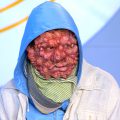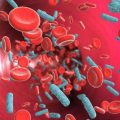Acute or chronic sinusitis - an inflammatory disease, which is characterized by the occurrence of a pathological process, centered in the area of the sinuses (paranasal sinuses). Acute sinusitis in adults or J01 of the ICD 10, usually, patient develops due to infection or a viral infection due to activation of bacterial conditionally pathogenic, dwelling on human mucous membranes. Sometimes the cause of sinusitis becomes mycoplasma or fungal infection, or an allergic reaction.
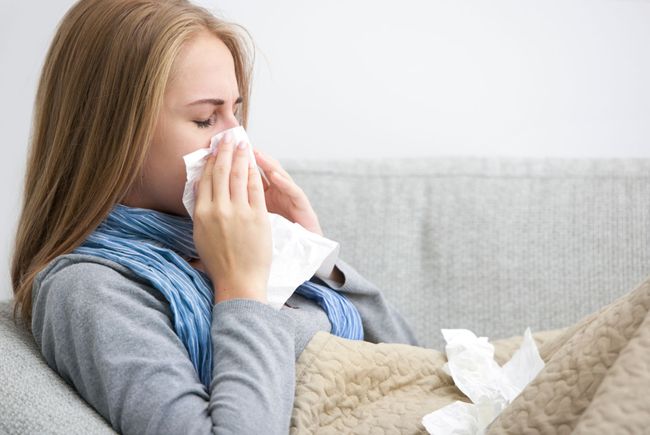
types of sinusitis
Sinuses - a small amount of space, located in the front area of the cranium. In all, seven people of cavities:
- Two lobnyh sinus;
- two maxillary;
- two lattice
- And one wedge.
All sinuses are lined with mucous and have a connection with the nasal cavity. Saving the message plays a vital role in ensuring the proper functioning of the paranasal sinuses. If for this or other reasons, the channel, providing a message, is closed (eg, mucosa due to edema during the acute rhinitis), the air, filling sealed sine, gradually absorbed into the blood stream and is replaced in the sinus inflammatory exudate.
This exudate is an excellent medium for bacterial flora breeding, which, activating, further provokes the development of inflammatory processes in the mucous. Developing inflammation of the mucosa of the paranasal sinuses - this is acute sinusitis.
When compared with an ordinary rhinitis sinusitis, which is accompanied by engagement of substantially all the nasal mucosa in inflammatory process, Infection is usually primarily affects one or more sinus paranasal sinuses.
The name of the various forms of sinusitis is defined by, which sinus is involved in the inflammatory process:
- antritis - the most common kind of sinusitis with predominant involvement in one or both maxillary sinuses inflammation process. His second name - maxillary sinusitis - due to location of the sinuses. Therefore, a frequent question in the Internet: "What is the difference between sinusitis and sinusitis" - is not entirely correct;
note! Sinusitis - is not a separate nosological form, and more often occurring species sinusitis!
- sinusitis - if this form of the process of inflammation is concentrated in one or both of the frontal sinuses;
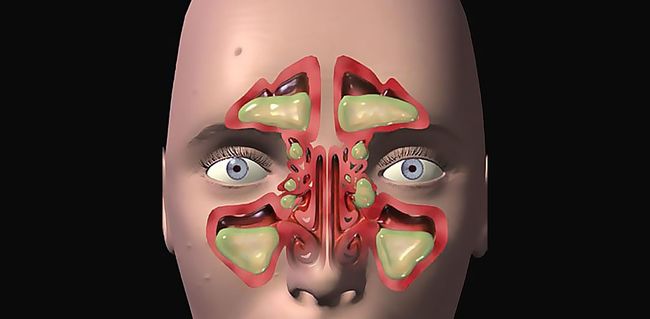
- sphenoiditis - inflammation of the mucous membrane of the sphenoid sinus;
- ethmoiditis - inflammation of the mucous cells ethmoid sinuses.
symptomatology
There are acute and chronic sinusitis (J32 ICD 10)
- I. Symptoms of sinusitis in the acute phase of this:
- Headache;
- Sleep disturbance;
- Weakness;
- Loss of appetite;
- fatigue;
- elevated temperature;
- Dry cough;
- eyelid edema;
- Nasal congestion;
- intoxication;
- redness of the eye;
- chronic cough;
- Toothache;
- cold;
- Pain in the face;
- Difficulty in nasal breathing;
- disorder of sense of smell;
- Weakness.

All of these symptoms - nonspecific, but, they have a particular, characteristic for the given disease. for example, leading symptom is difficulty in nasal breathing and the presence of abnormal discharge from the nasal passages. Headache with sinusitis often concentrated in the temporo-frontal area and is amplified during the change of position of the head (the slopes). When the process involved the sphenoid sinus, develops a characteristic symptom - headaches worse at night, and are localized in the occipital region, proceeding as if the center of the head. Nasal passage, usually struck with the same side, which is inflamed sinus.
Sinusitis is also divided by the degree of severity:
- If the disease is mild or is in an initial phase, the radiographic signs of it may be missing, and intoxication - be expressed moderately. The temperature in this case practically does not rise above subfebrile.
- Moderately severe symptoms of intoxication is characterized by moderation and moderate pain, which manifests itself mostly on the affected side. The temperature can be increased to 38-38,5 WITH. Besides, possible mild reactive phenomenon: swelling of the century, soft tissue swelling in the area of the paranasal sinuses.

- Severe course of sinusitis is accompanied by the phenomena of the expressed intoxication, severe headaches and pain, manifests itself in the infected sinus walls. The temperature in this case exceeds the mark of 38,5 WITH.
Important! In severe course of sinusitis especially high risk of developing complications! Be sure to consult your doctor.
II. Chronic sinusitis is developed in the case of acute inflammation insoluble, that may occur in the absence of the treatment or its early termination. As a result, disrupt the normal functioning of the affected sinus and / or pathological disorders outflow content, Reinforced reproduction saprophytic and pathogenic microflora in sinus extends, as a result, depending on the characteristics of the mucous, immunity of the patient and the nature of the infectious agent develops a form of chronic sinusitis:
- exudative sinusitis:
- purulent sinusitis;
- Syeroznyi sinusitis
- catarrhal sinusitis.
- productive sinusitis:
- Polipoznyi sinusitis;
- Pristyenochno gipyerplastichyeskii sinusitis.
- alternative forms:
- atrophic;
- holesteatomny.
- Mixed suppurative polypoid sinusitis.
Sinusitis in adults in the chronic form generally occurs much less frequently, than in younger patients. Chronic sinusitis children often being developed against the background of rhinitis disease, flu, tonsillitis, measles, scarlet fever and other infections, common in children.
Important! Sinusitis Home Treatment, undoubtedly, permissible, but it should be carried out after treatment and under supervision of a specialist.
If the disease develops in a patient in the chronic form, it always leads to a significant decrease in the protective forces of immunity, as a result (especially for children) the patient becomes more vulnerable with respect to the threat of other diseases. In the first place on the frequency of complications in this case, there are respiratory diseases (pharyngitis, bronchitis, tracheitis and so on.)
For each age group has its own peculiarities of patients of the disease.
- For example, infants and preschoolers often show common symptoms - prolonged low-grade fever, weight loss, fatiguability, sleep disturbances, cough, cervical lymphadenitis, circles, inflammation of the conjunctiva.
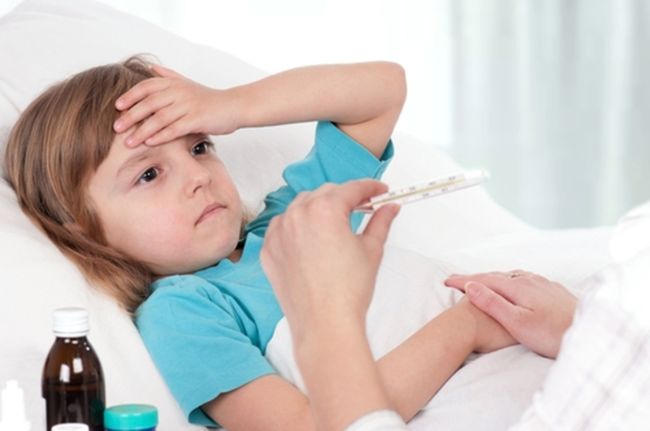
- Children of school age and adults exhibit approximately the same disease picture. Not only symptoms, but also the principles of treatment of acute and chronic sinusitis in older children and adults are almost identical.
Exacerbations occur more frequently and tightened for long periods. Breathing through the nose is hampered considerably, headaches are pronounced, lost sense of smell, profuse nasal discharge.
Diagnostics
Diagnosis is based on medical history, results of instrumental examination and on the basis of X-ray and CT data. For the production of "sinusitis" responsible diagnosis ENT doctor.
"Gold standard" in diagnosing any of the forms of sinusitis in adults considered paranasal sinus puncture, followed by investigation of its contents and detection therein of increased amounts of bacteria.
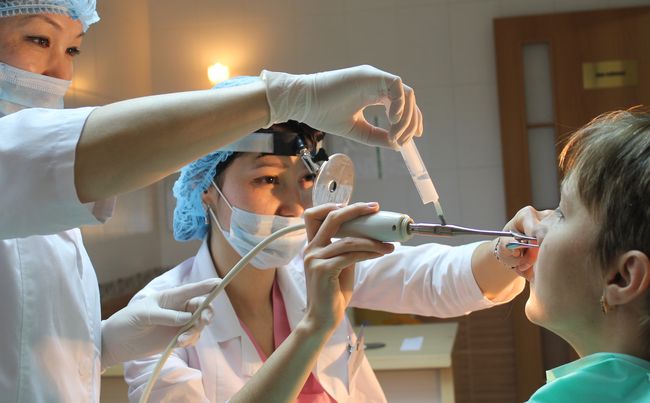
Important! For the diagnosis of sinusitis child, this method is not shown. In children, diagnosis is based on the external manifestations of the disease and the survey data from the ENT doctor.
Of the additional sinuses of research techniques may be mentioned ultrasound and magnetic resonance imaging. Informative and endoscopy will paranasal sinuses.
Treatment
- Conservative therapy for sinusitis is the appointment of drugs, intended to remove inflammatory edema of the nasal mucosa, as well as to provide the contents of the outflow of the paranasal sinuses.
Important! preparations, used to treat various forms of sinusitis, You should be appointed a doctor. Receiving drugs should be carried out strictly according to the scheme, Only an expert can know exactly, to cure sinusitis in each case. Failure to comply with this recommendation, you risk to get the disease in the chronic and severe complications.
For the topical treatment the doctor prescribes a short vasoconstrictor drugs (drops Xymelin et al.) and antihistamines (Tsetryn, Tavegil and so on.)
note! Nose drops should not be used more, than a few days (to a week), otherwise you can aggravate the course of the disease.
- In acute viral disease treatment with antibiotics is not shown sinusitis. Held physiotherapy, national treatment is to take warm foot baths, nose washing decoction of chamomile and oak bark. It is also home treatment includes drinking regime and sleep. Showed reception vitamin complexes and antihistamines.
Inhalation of sinusitis are also conducted with a decoction of chamomile or normal saline.
- But for patients with bacterial sinusitis antibacterial agents are a major part of the treatment - they are directed at restoring the sterile environment inside the affected sinus. Patients prescribed such drugs, like Cefuroxime, amoxicillin, Clarithromycin and other. Folk remedies can be used in conjunction with medications prescribed by your doctor.
Antimicrobial therapy of chronic forms of sinusitis is not fundamentally different from the treatment of acute. Treatment should be comprehensive, combined with surgery. A must is to perform puncture sinuses.
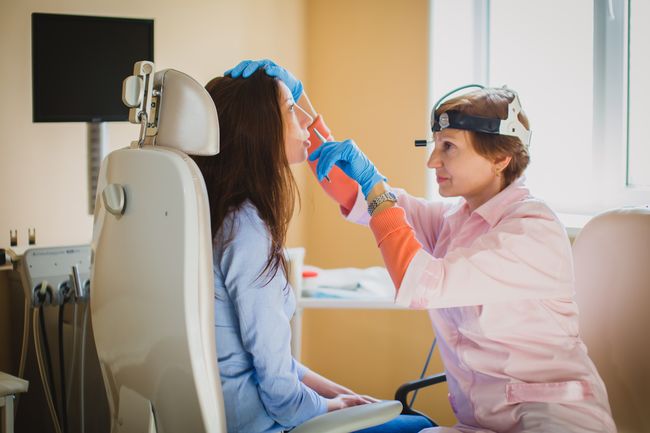
Kids preschool antibacterials as possible prescribed in the form of suspensions or syrups.
Duration of therapy sinusitis depends mainly on its shape and on the severity of his current. In acute bacterial sinusitis patient, receiving adequate treatment, recover within 7-10 days on average, but an exacerbation of chronic process - recovery may take up to 3 weeks.
A significant improvement in the condition of the patient when assigning antibiotic occurs within about 48-72 hours.
- As for surgical methods, the most commonly used rinsing the nasal cavity with subsequent sinus puncture victim. Operation has various reviews on the Internet, from enthusiastic to negative. Its meaning is, that due to puncture reduced pressure in the sinuses and it becomes possible to introduce directly into the lumen of drugs.
If the operation was inefficient, and began to develop complications, then conducted a more radical surgery, after which the cured sinusitis has not returned.





